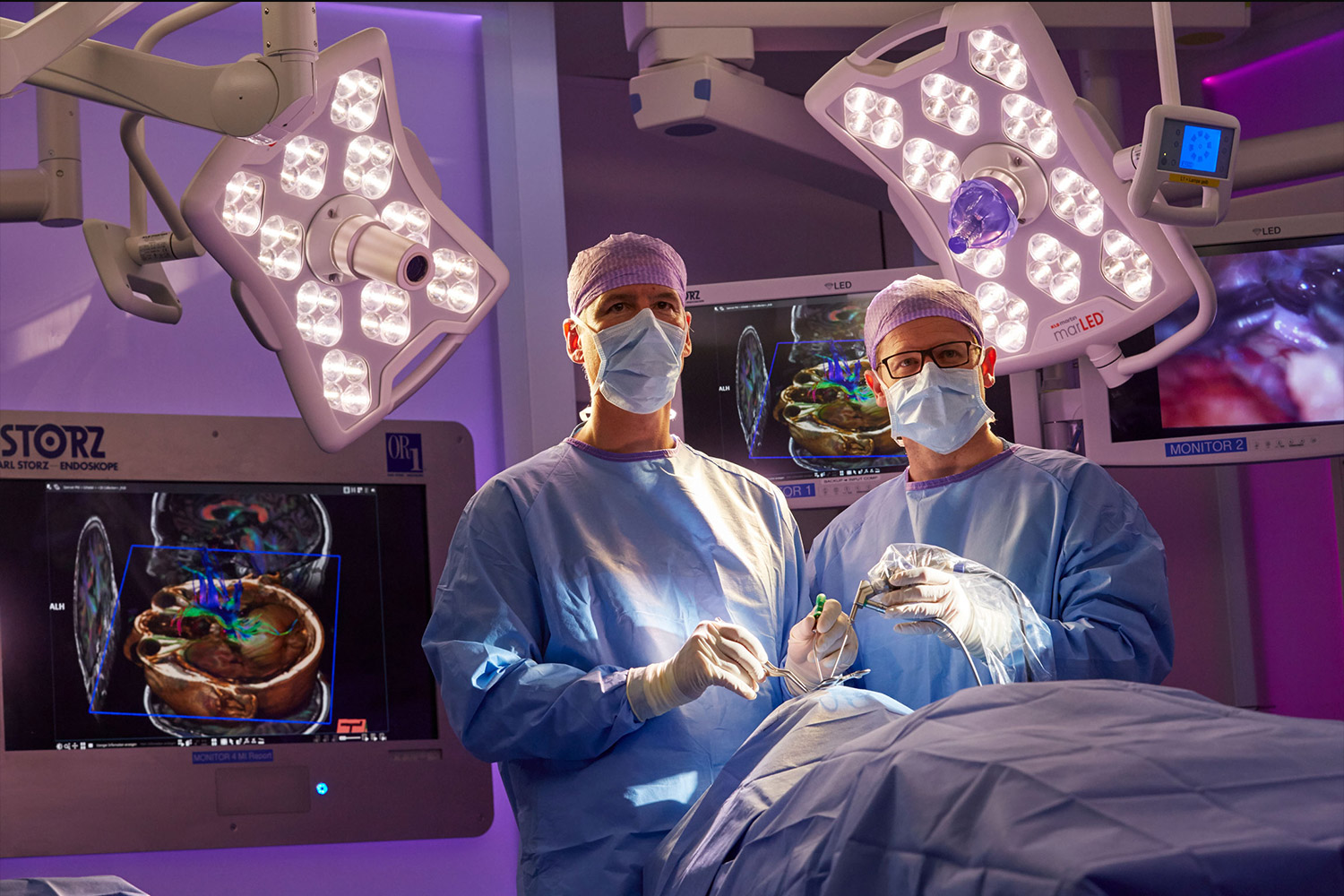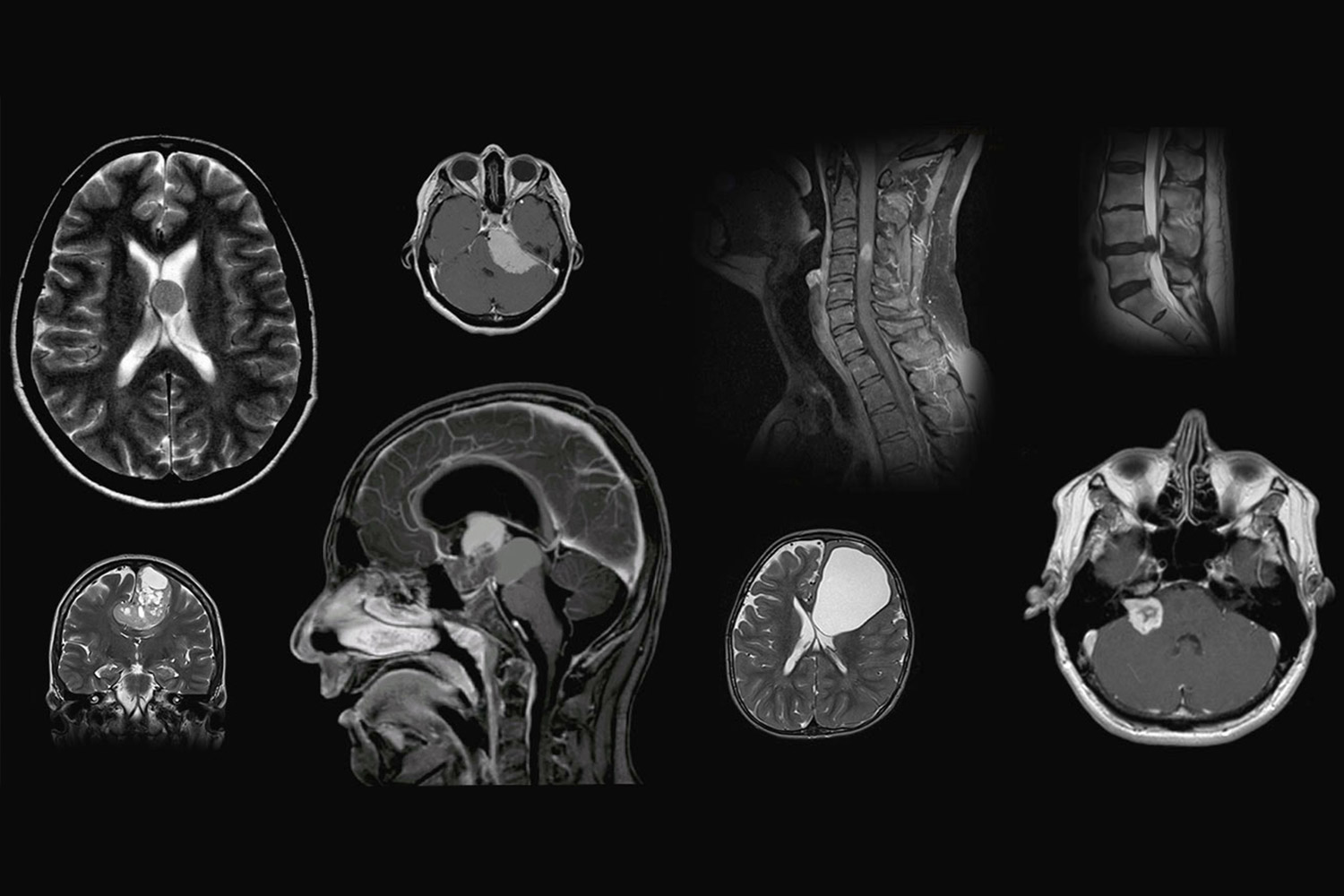MODERN NEUROSURGERY
OPTIMAL RESULTS WITH LOWEST POSSIBLE STRESS: EFFECTIVE, SAFE & GENTLE
Despite rapid technical advances, for decades there has been little change in neurosurgical surgical techniques. Since the surgical microscope was introduced in the 1970s, microsurgical technology continues to be the gold standard worldwide. Individual computer-aided methods, such as neuronavigation and the digital 3D processing of image data, are now regularly used. Microscopes and instruments have also been optimised. However, since then, no fundamental further development has taken place.
The aim of any new technology must be to improve the existing one. With microsurgical technology, there are significant restrictions in terms of viewing the lesion from the outside (only possible in straight-line view) and the continuous contact with the large and heavy microscopes. This can lead to an inadequate representation of the important structures and unergonomic posture, and can unnecessarily restrict the neurosurgeon’s performance.
Large and very traumatic access incisions from the early days of microsurgery are still used as standard, because the neurosurgeons performing the operations have learned to do this and have built up a comfort zone. Any deviation from the standard represents a potential uncertainty, and change will only come gradually.
Professor Axel Perneczky, a gifted and visionary microsurgeon, developed new neurosurgical concepts, instruments and surgical techniques in the 1990s. Endoscopes have played a decisive role in overcoming the limitations of microsurgery. The concept became known worldwide as KEYHOLE SURGERY, and the new technique as endoscope-assisted microsurgery.
Professors Hopf and Reisch had the unique opportunity to complete their entire training with this charismatic pioneer of modern neurosurgery and were able to learn the new concepts from the outset. Over their many years of joint work, numerous publications of outstanding clinical results and scientific research have shown that this modern type of neurosurgery is superior to the standard technology.
At the NEUROSURGERY CENTRE in Zurich, all patients are advised and treated exclusively according to this principle. The patients are thrilled!

SKILLS AND SPECIALIST AREAS
Professor Hopf and Professor Reisch have successfully treated well over 1000 patients with complex brain and skull-base diseases at the Centre for Neurosurgery in Zurich. Endoscopic and minimally invasive surgical techniques are used in all operations.

IMAGING IN CRANIAL NEUROSURGERY
Our range of treatments covers diseases of the brain, spinal cord and spine. These include brain and skull-base tumours, cerebrovascular diseases, cranial nerve compression syndromes, CSF circulatory dysfunction, degenerative and tumour diseases of the cervical, thoracic and lumbar spine or of the peripheral nerves of the limbs.
